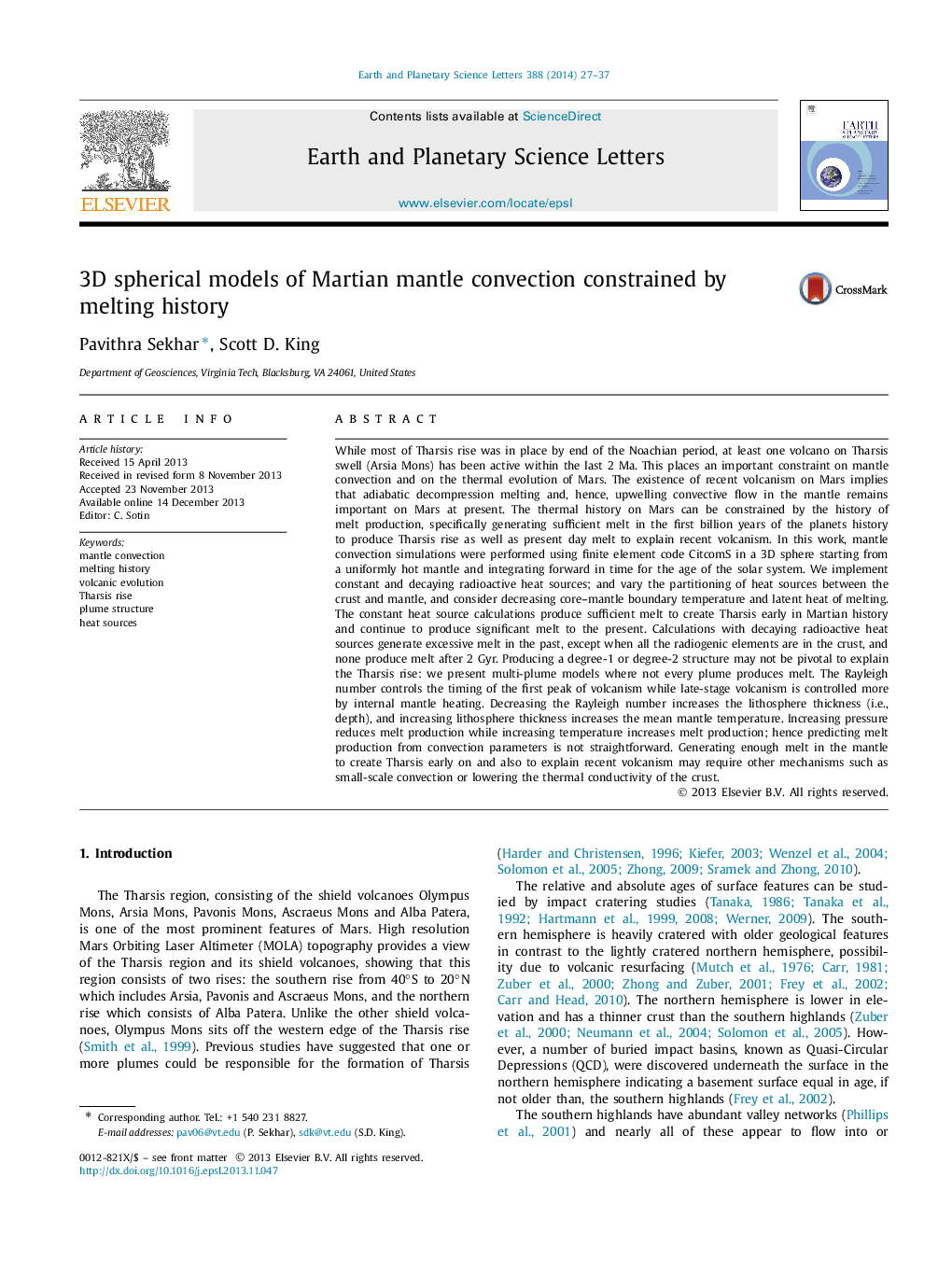| کد مقاله | کد نشریه | سال انتشار | مقاله انگلیسی | نسخه تمام متن |
|---|---|---|---|---|
| 6429749 | 1634768 | 2014 | 11 صفحه PDF | دانلود رایگان |

- Mantle convection simulations are performed on 3D sphere using CitcomS.
- We model volcanism constrained by melting history and importance of low-degree structure.
- We implement constant and varying heat sources that decay with time.
- Rayleigh number controls the early volcanism while internal heat controls late stages.
- Excessive melt early on and none at present with a probability of low-degree structure.
While most of Tharsis rise was in place by end of the Noachian period, at least one volcano on Tharsis swell (Arsia Mons) has been active within the last 2 Ma. This places an important constraint on mantle convection and on the thermal evolution of Mars. The existence of recent volcanism on Mars implies that adiabatic decompression melting and, hence, upwelling convective flow in the mantle remains important on Mars at present. The thermal history on Mars can be constrained by the history of melt production, specifically generating sufficient melt in the first billion years of the planets history to produce Tharsis rise as well as present day melt to explain recent volcanism. In this work, mantle convection simulations were performed using finite element code CitcomS in a 3D sphere starting from a uniformly hot mantle and integrating forward in time for the age of the solar system. We implement constant and decaying radioactive heat sources; and vary the partitioning of heat sources between the crust and mantle, and consider decreasing core-mantle boundary temperature and latent heat of melting. The constant heat source calculations produce sufficient melt to create Tharsis early in Martian history and continue to produce significant melt to the present. Calculations with decaying radioactive heat sources generate excessive melt in the past, except when all the radiogenic elements are in the crust, and none produce melt after 2 Gyr. Producing a degree-1 or degree-2 structure may not be pivotal to explain the Tharsis rise: we present multi-plume models where not every plume produces melt. The Rayleigh number controls the timing of the first peak of volcanism while late-stage volcanism is controlled more by internal mantle heating. Decreasing the Rayleigh number increases the lithosphere thickness (i.e., depth), and increasing lithosphere thickness increases the mean mantle temperature. Increasing pressure reduces melt production while increasing temperature increases melt production; hence predicting melt production from convection parameters is not straightforward. Generating enough melt in the mantle to create Tharsis early on and also to explain recent volcanism may require other mechanisms such as small-scale convection or lowering the thermal conductivity of the crust.
Journal: Earth and Planetary Science Letters - Volume 388, 15 February 2014, Pages 27-37